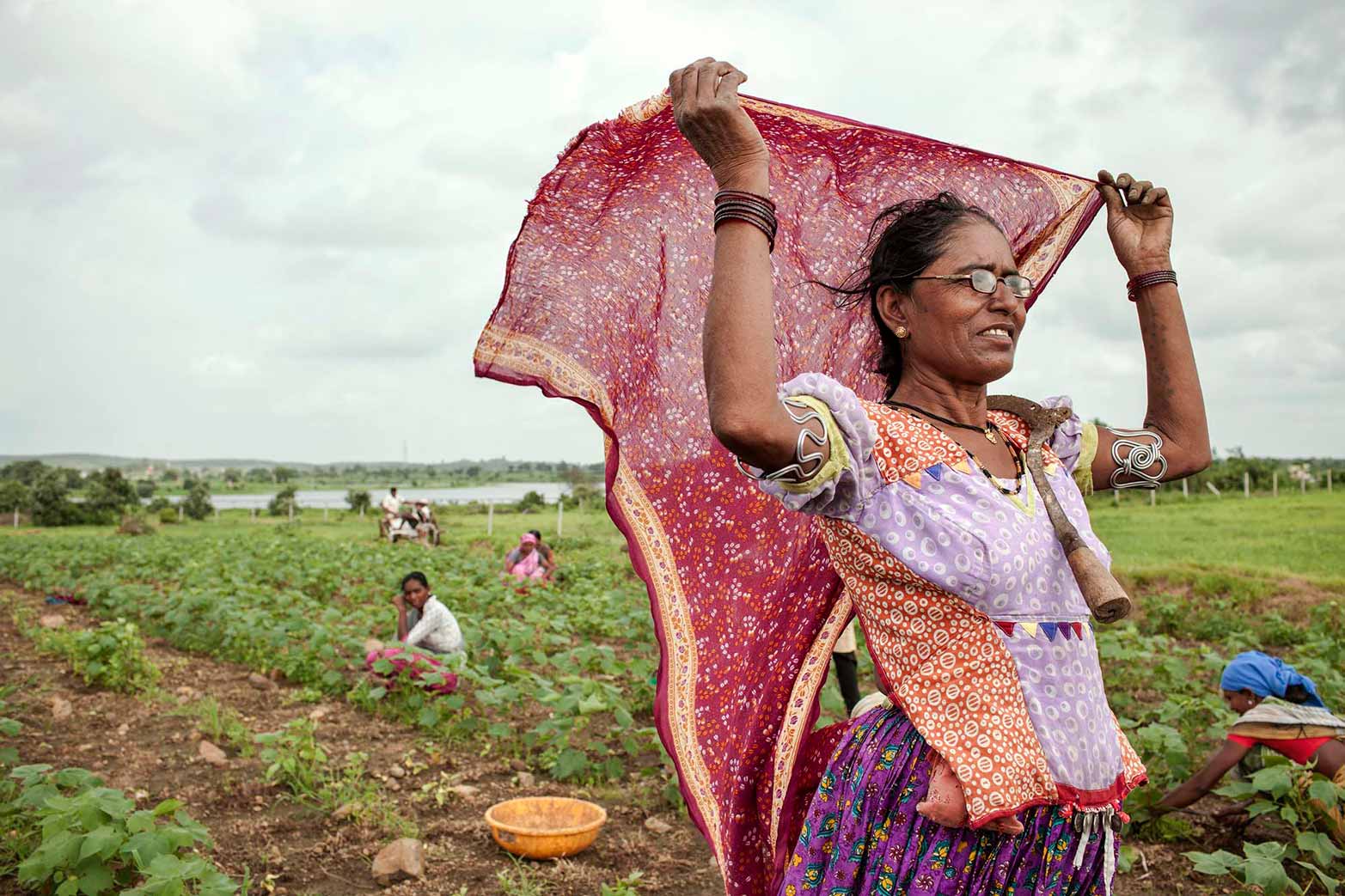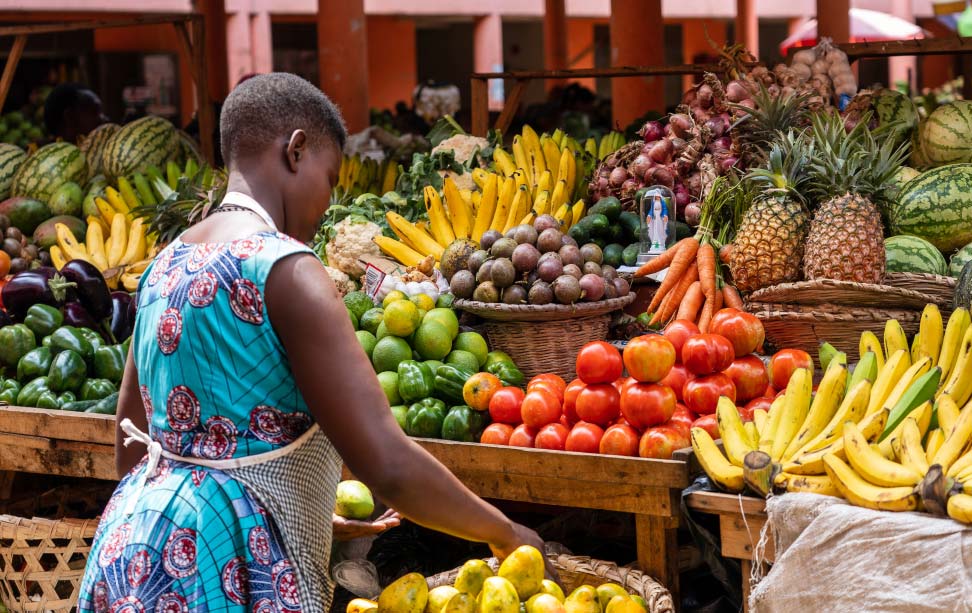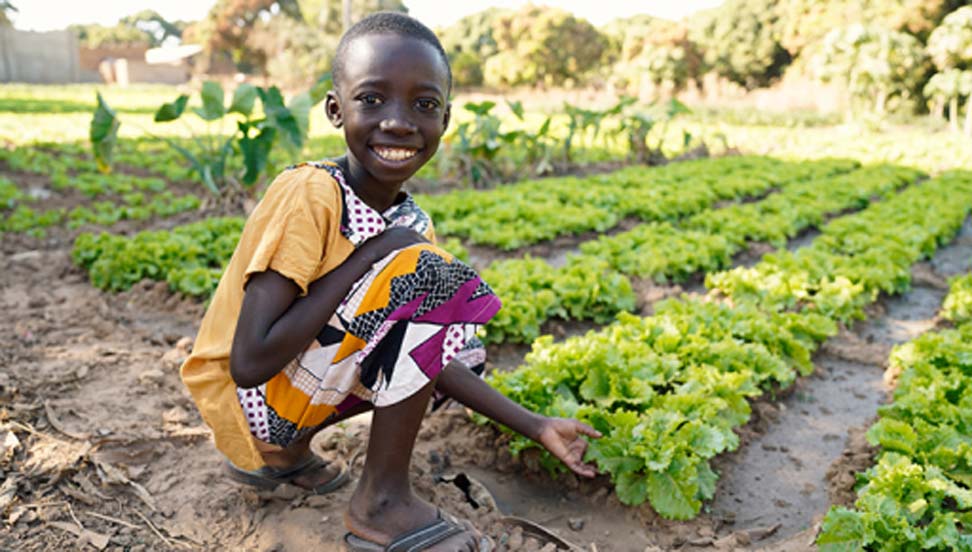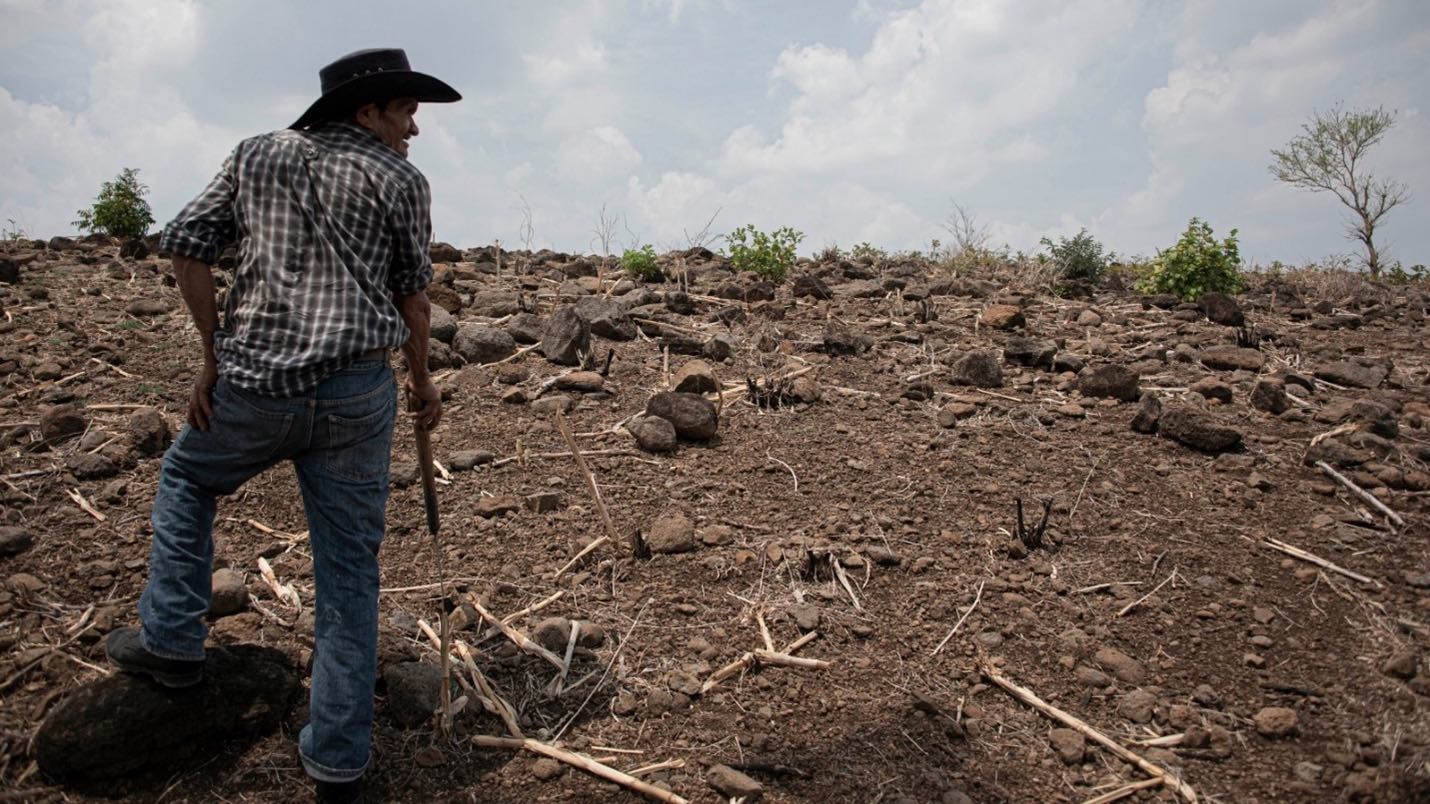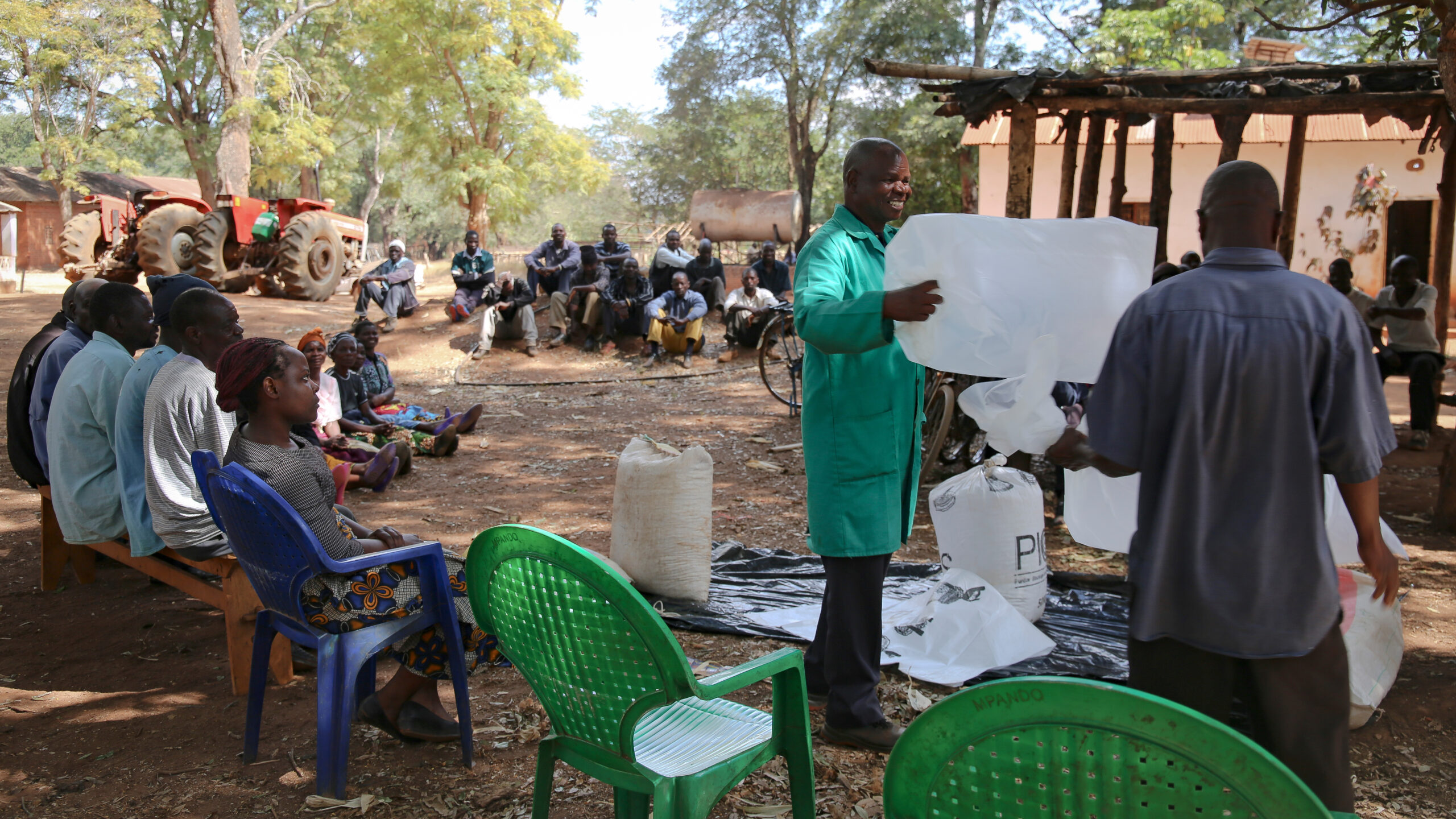There are over 11 million undocumented immigrants living in the United States. More than half of this population is from Mexico (37%) and Central America (19%) (Figure 1). Over the past four years, annual apprehensions of foreign nationals at U.S. borders—most along the border with Mexico—have fluctuated between 1.6 million and 2.2 million. About two-thirds of these migrants are similarly from Mexico and Central America, particularly Guatemala, Honduras, Nicaragua, and El Salvador.
Figure 1

Note: “Others” encompasses Asia, Europe, Canada, the Middle East, Africa, and Oceania.
While the U.S. has pursued a policy of multi-pronged engagement with these and other countries in the region—including economic development assistance—a major focus has been on security measures to limit the number of migrants crossing the southern border.
Policies on migration and foreign assistance are typically considered distinct, but they are interrelated. In fact, a concerted and targeted approach to foreign assistance can serve as an important complement to border security measures by helping to reduce migration at the source.
Over time, well-targeted foreign assistance programs can help reduce some of the shocks, threats, and stresses that drive migrants to leave their homes and settle elsewhere. By providing a more prosperous future at home, these programs often result in lower migration. Development aid can also play a crucial role in origin countries eventually facing reduced remittances from family members in the U.S. under stricter border security measures. In Honduras and El Salvador, these payments account for close to one-third of overall GDP; in Guatemala, close to one-fifth.
Considering that in 2024, U.S. economic assistance to Latin America was one-third of what was directed to Asia and one-sixth to Africa, the U.S. has yet to fully leverage these potential advantages of foreign assistance to the region.
However, due to the complexity of forces influencing migration, this is not a straightforward matter of simply increasing aid. This post presents research findings from IFPRI and other organizations to discuss how foreign aid impacts decisions to migrate to the U.S. and suggests approaches to developing foreign aid programs aimed at curbing migration.
The migration decision
International migration is a complex phenomenon with diverse motivations that can also vary across locations and realities. Very difficult or extreme situations encourage or force people to leave their current location (“push” factors), while favorable conditions elsewhere attract people to move into a new location pursuing a better future (“pull” factors).
“Push” factors. People migrating from developing countries, who mainly originate from vulnerable rural areas, are frequently forced or otherwise pushed to leave their homes and embark on often perilous journeys across borders—most often to the U.S., the main country destination of international migrants worldwide. Many factors can trigger such decisions—a lack of local economic opportunities, food insecurity, violence and crime, or extreme weather events, among others.
Economic motivations, including insufficient income, low wages, and unemployment, continue to be the main drivers of migration from Latin America to the U.S., followed by extreme weather and other types of disasters, insecurity and violence, and family reunification (CAI, 2019; Soto et al., 2021; Hanson et al., 2023). Ample evidence shows that disasters, violence, and crime are drivers of regional migration to the U.S. (Feng et al., 2010; Jessoe et al., 2018; Pons, 2021; Mahajan & Yang, 2020; Clemens, 2021; Bermeo et al., 2022; Zhu et al., 2024).
These factors are often interrelated and can have complementary effects that multiply the threats to local populations (Hernandez et al., 2023; Diaz-Baca et al., 2024). According to recent estimates, four out of five people forcibly displaced had experienced acute food insecurity and high levels of malnutrition (Barchfield, 2021).
“Pull” factors. Employment opportunities, wage differentials, and proximity (whether physical, cultural, or social, including family reunification) serve as compelling factors in making the U.S. such a major destination for migrants, particularly from Mexico and Central America. Many send remittances to their families back home, providing a significant source of income. These factors have often overridden U.S. efforts to increase the costs of undocumented entry and reduce the benefits of undocumented labor in recent decades (Massey & Riosmena, 2010) (Figure 2).
Figure 2

Note: The arrows indicate the direction of causality, which is bidirectional in most of the cases between each factor and migration,
as well as between the factors themselves.
Foreign aid can reduce the need to migrate
Evidence shows that foreign aid, particularly development and humanitarian aid that is well-structured and targeted, can be key to reducing the push factors that induce people to leave their countries. Successful foreign aid programs have the potential to promote economic development and job creation, increase local well-being, and reduce the need for people to flee their communities in search of better living conditions, thus reducing migration.
Building stronger local economies
Given that an important and increasing number of international migrants originate from rural areas, development programs that support agricultural productivity and trade, small businesses, and infrastructure projects can help boost local rural economies and create jobs, making it less necessary for individuals to relocate.
A recent IFPRI study by Hernandez et al. (2023) focusing on Guatemala evaluated the impact of the Feed the Future Value Chains Project, a program aimed at improving agricultural incomes, resilience, and the nutritional status of farmers and their families—showing positive impacts on children’s weight-for-height, food insecurity, and crop diversity. The study also indicated a lower increase in the intentions to migrate (as well as a lower increase in the migration rate) among program beneficiaries compared to non-beneficiaries, although the differences are not large enough to be statistically significant at conventional levels. The study was conducted in the context of recent global and local shocks that have spurred migration, including the COVID-19 pandemic, extreme weather events in the region, and the 2022 Russian invasion of Ukraine, which triggered spikes in agricultural input prices.
Helping households manage adverse events and contend with crime
Funding strategies that help recipients build resilience to extreme weather and other adverse events and programs that support crime prevention and law enforcement reforms can also help to reduce the urgency for people to relocate—though the evidence for Central America is still growing and more research is needed.
A recent set of IFPRI studies, also in Guatemala (Berrospi et al., 2023; Ceballos et al., 2024) shows, for example, how overlapping shocks can lead to migration. Evaluating the impact of COVID-19 on food security, livelihoods, and migration attitudes, it showed that while the pandemic increased the intention to migrate, households affected by Hurricanes Eta and Iota, which struck two weeks apart in November 2020, reported a larger and sustained increase in their willingness to emigrate relative to those not affected, even two years after the events.
Yet there are proven tools for improving community resilience to such shocks. IFPRI efforts in other regions to strengthen agricultural insurance and other risk management tools have helped build local capacity to better cope with climatic risks. Given Central America’s vulnerability to extreme weather events (Eckstein et al., 2021), these approaches could be effective there in improving people’s ability to weather storms and reducing incentives to migrate.
Improving governance
Investing in combating corruption and strengthening local governance can similarly play an important role in reducing drivers of migration.
Governments, especially in Central America, have struggled to address many of the problems their more vulnerable citizens face—including poverty, basic safety concerns, and disasters. Generally speaking, the lack of sufficient public resources results in weak government institutions that chronically fall short in carrying out their mandates (Gauster & Isakson, 2007; CRS, 2024). An unfair legal system and lack of robust institutions can drive migration, particularly from regions afflicted by violence and underdevelopment (Urbański, 2022). A study by Kline et al. (2020) of CGIAR shows that by strengthening institutions and democratic representation in Guatemala, public local services can be improved along with economic opportunities.
How research can increase the effectiveness of development programs to support alternatives to migration
While existing evidence shows the promise of development assistance for reducing migration, it also shows there are important caveats. If not well-targeted and structured, assistance programs can be ineffective—or in some cases backfire and encourage migration.
If programs neglect the root causes of migration, they may merely relieve liquidity or credit constraints (either directly or indirectly) that potential migrants face—giving them resources to depart, yet little incentive to remain.
Take the case of conditional cash transfers. Ample evidence shows this type of social assistance intervention is effective in reducing poverty and increasing resilience. Yet in some circumstances, cash transfer programs can trigger migration among households more prone to relocate—particularly if they are not implemented at a large enough scale, as small and fragmented programs do less to improve the current local socioeconomic situation (Diaz-Bonilla & Centurion, 2022).
To be effective on their own terms—and as a tool for reducing migration—conditional cash transfers should be strictly implemented, targeted, and prolonged (Clemens, 2022). An example is the Mexican PROGRESA/Oportunidades anti-poverty and human resource conditional cash transfer program, which has influenced social protection policies in many countries. Among other impacts, the program reduced overall migration to the U.S. among households receiving transfers within the first 20 months of participation (Stecklov et al., 2005), although Angelucci (2015) later showed an increase in labor migration among poor, low-skilled individuals starting six months after receiving the first transfer.
In this regard, well-structured social protection programs targeting those most in need may not only complement social assistance programs but can become an important part of public policy packages to better manage mobility (Adhikari & Gentilini, 2018).
How to direct foreign assistance to help limit disaster-related migration is also not clear-cut, as the understanding of the relationships between mobility and climate risk is rapidly evolving.
A joint study in Guatemala between IFPRI and University of Maryland-NASA Harvest shows that climatic stressors may have both direct (positive) and indirect (negative) effects on the decision to migrate. For instance, certain climate-driven events (e.g., droughts) encourage more people to relocate, but climatic stresses (e.g., high temperatures and low soil moisture) also affect agricultural productivity (yields) and household liquidity, which can prevent people from migrating, at least in the short term. The study recommends more research to fully understand the underlying mechanisms.
A recent assessment by CGIAR researchers similarly emphasizes the importance of further examining and understanding the nexus and interrelations between climate risks, security, and mobility. This is necessary to better align relevant climate action, peace, and social protection investments, in a context where funds are typically insufficient to cope with multiple crises. Higuera-Flores et al. (2023) of CGIAR also highlight the complex interplay between climate, security, and mobility in Guatemala.
A better understanding of development aid and migration
These examples show the challenge—if curbing migration is a key goal—of shaping successful policies that effectively change conditions in migrant-origin countries to induce fewer people to migrate but not the opposite (Clemens & Postel, 2018).
To achieve this balance, evidence-based policies are critical, as is recognizing that migration is a complex decision and individual motivations may vary across locations and circumstances. At the same time, the literature evaluating different development interventions is still growing and not fully conclusive with respect to the ultimate effects on migration.
Thus further evaluation research is necessary to identify the most effective programs, interventions, and combinations that can work consistently.
Innovative tools to guide development interventions
A range of statistical, analytical, and data-visualization tools exist that can play a vital role in informing policies, programs, and investments that ultimately shape migration decisions.
For example, to monitor cross-border migration patterns among populations of interest in Central America, IFPRI has developed an innovative Migration Propensity Index (MPI) to better measure and track the likelihood of emigration among households. This tool, constructed for Guatemala and Honduras, can be an effective instrument for anticipating migration and for the initial targeting of development programs aimed at improving livelihoods and reducing poverty in origin countries.
A variety of more general context and targeting tools—focusing on economic, social, political, and environmental conditions—have also been developed for Guatemala, Honduras, El Salvador, Haiti, Ecuador, and Peru to help guide stakeholders in prioritizing development investments and complementing efforts at the subnational level. These also include dedicated interactive platforms for donors, as well as a poverty-sensitive scorecard for Central America.
Monitoring unfolding shocks
Finally, we are in an era of recurrent global shocks and price spikes in which sudden, widespread economic and financial hardship can result in increased migration. Tools that help to anticipate and manage such crises can play a key role in shaping assistance programs and limiting migration.
Economic shocks caused by COVID-19, for example, fueled undocumented migration in West Africa (Ambler et al., 2023), while one in three coffee producers in Guatemala saw migration as a better option than remaining in their communities during the first year of the pandemic (Hernandez et al., 2021). The start of the Russia-Ukraine war also led to rising fertilizer prices and global food security concerns (Hebebrand & Laborde, 2022), which intensified economic pressures and probably the likelihood of migration.
In this respect, the extensive modeling, tools, and price monitoring analysis by CGIAR researchers highlighting where crises affect food security and poverty can help prioritize crisis response. IFPRI produces a wide range of tools and blog posts that bring data and analysis of crises and relevant global, regional, and local issues to the attention of policymakers, using concise and practical language.
Conclusion
Research suggests forms of foreign assistance—if effectively and consistently applied over time—can help to reduce incentives to migrate to the U.S. More studies are needed to better understand the dynamics of various triggering factors and shocks—with special attention to Mexico and Central America—and how they influence migration decisions. Yet what we do know suggests that a relatively modest investment can yield substantial benefits for targeted countries in terms of improving local living conditions and, for the U.S., management of one of its most challenging national policy issues.
Key takeaway messages
- Migration is a multidimensional phenomenon driven by a wide range of factors and motivations that can vary across households and settings.
–On one hand, many people are often pushed to flee their countries due to scarce economic opportunities, food insecurity, violence, crime, and extreme weather, among other hardships, such that migration should also be viewed as a survival and adaptation strategy.
–On the other hand, employment opportunities, wage differentials, and proximity constitute permanent factors that make the U.S. an attractive destination country for many people. - Foreign aid, particularly development and humanitarian programs, can play a crucial role in addressing the factors and circumstances that push or force people to relocate. Well-designed and implemented aid programs in Mexico and Central America can drive economic growth, create jobs, sustain livelihoods, strengthen resilience, and protect against fragility and violence, thereby reducing the need for people to leave their communities in search of better opportunities, ultimately curbing undocumented migration to the U.S.
–While foreign aid alone cannot fully stop migration (and in some circumstances can trigger it), it serves as a fundamental preventive measure and cost-effective strategy to tackle the issue at its root. - Development interventions are critical to address the needs of the most vulnerable. However, more data and research are needed to better understand the type of policies and interventions (or combination of them) that can be most effective in increasing local livelihoods and welfare while attenuating migration.
–If curbing migration is the ultimate goal, a set of well-designed and implemented programs would address the key triggering factors that push or force people to relocate. Such coordinated efforts should target areas with a higher risk of emigration—which are also generally poorer, food insecure, and vulnerable areas, but keeping in mind that not necessarily the poorest in these areas eventually emigrate.
Manuel Hernandez is a Senior Research Fellow with IFPRI’s Markets, Trade, and Institutions (MTI) Unit; Valeria Piñeiro is IFPRI Regional Representative for Latin America and the Caribbean; Maria Lucia Berrospi is an MTI Research Analyst. Opinions are the authors’.
